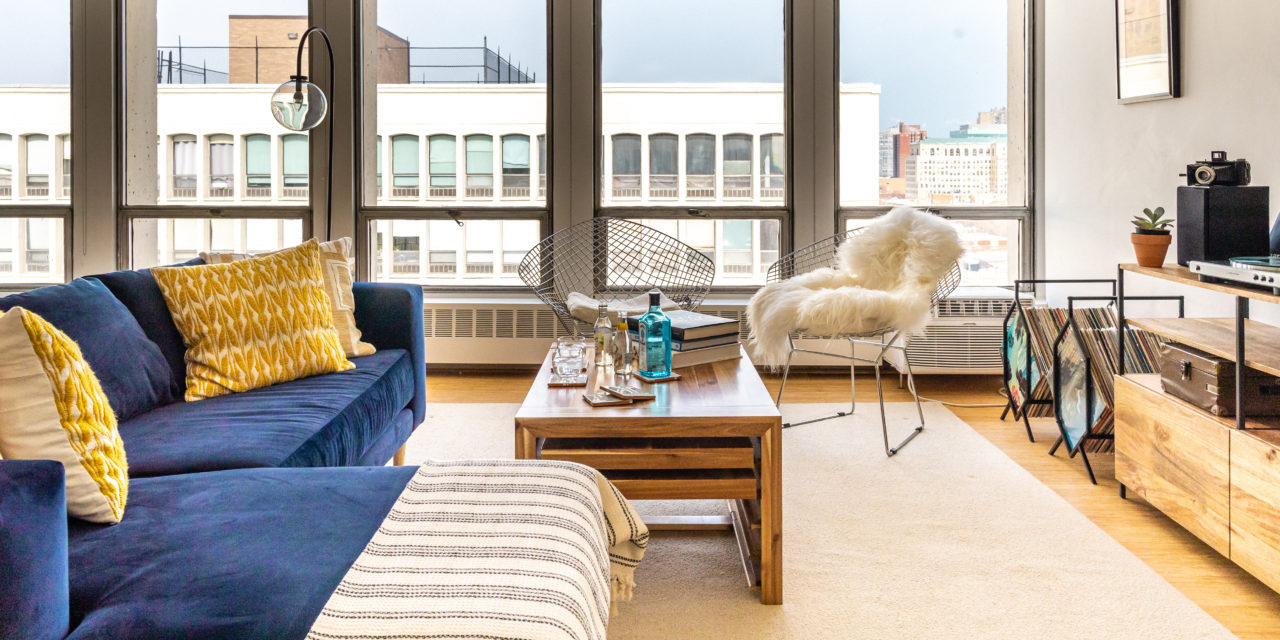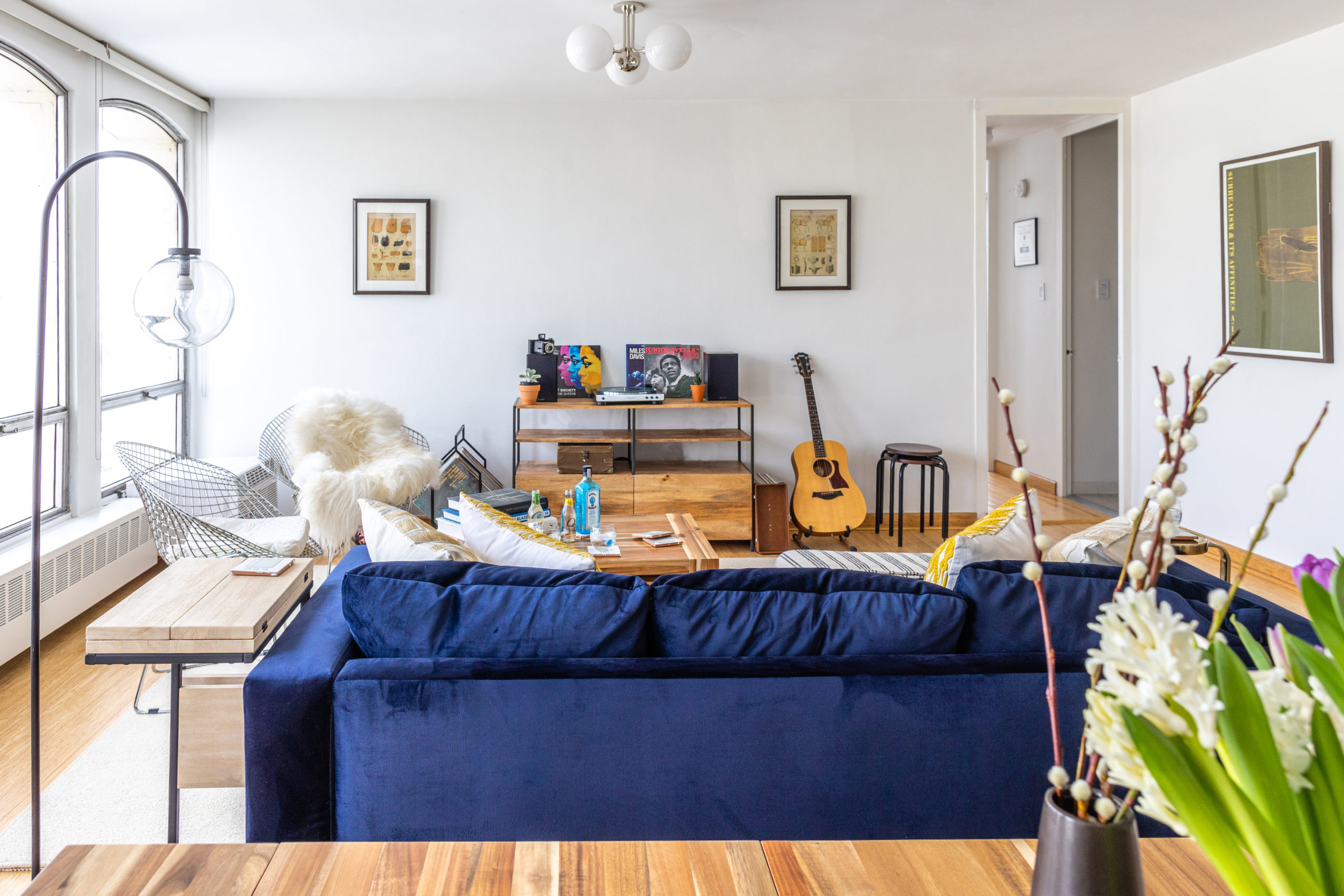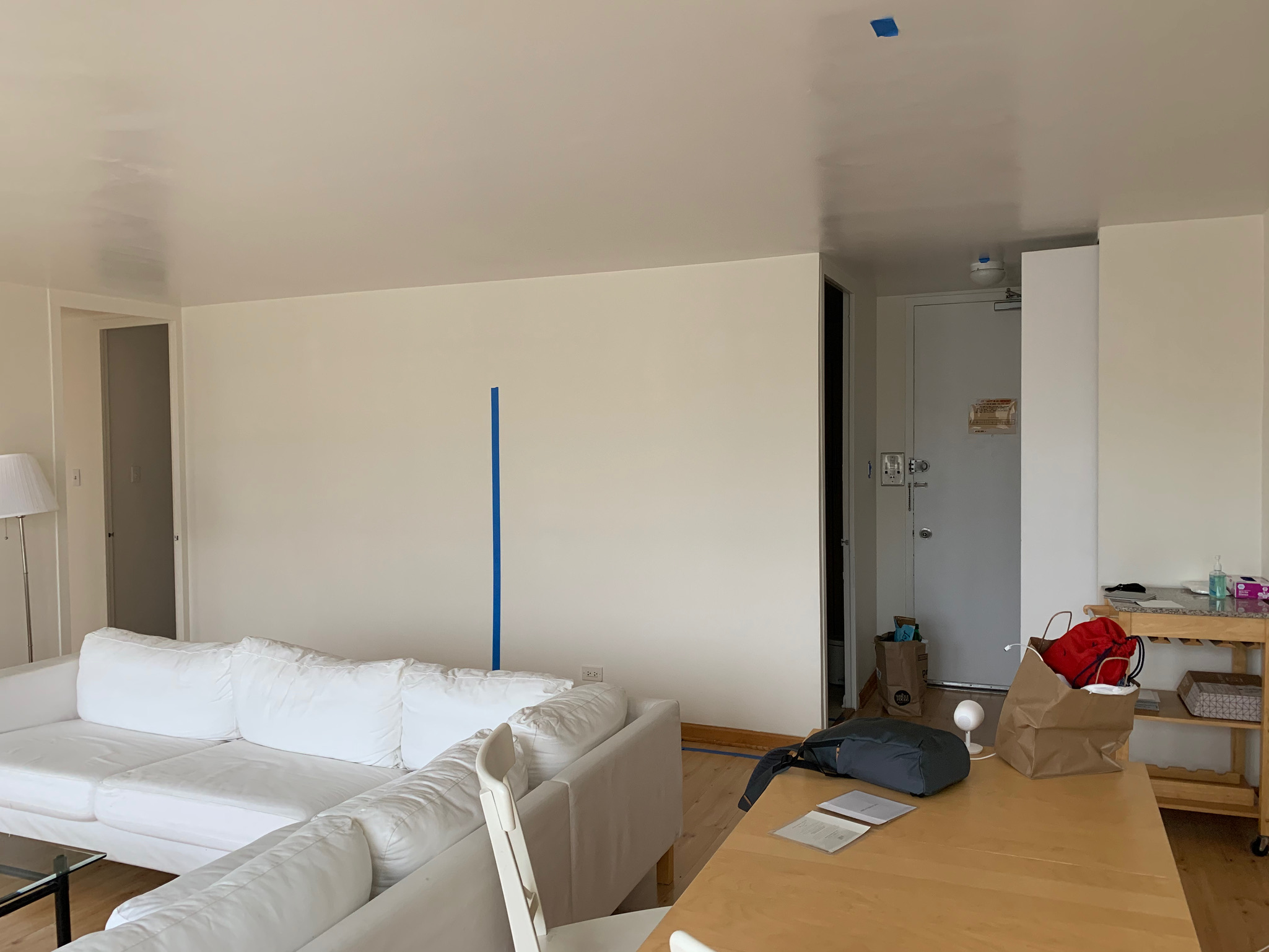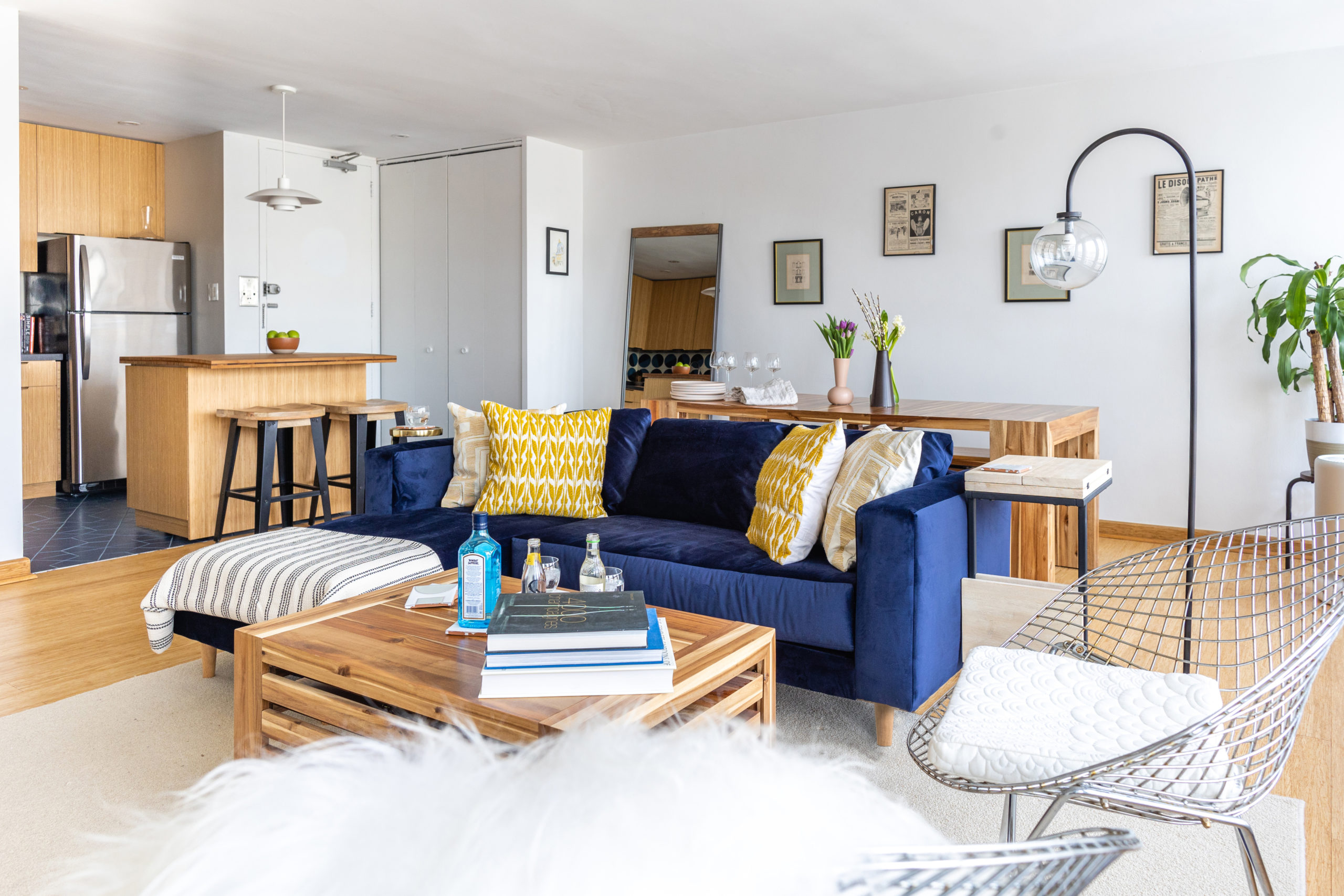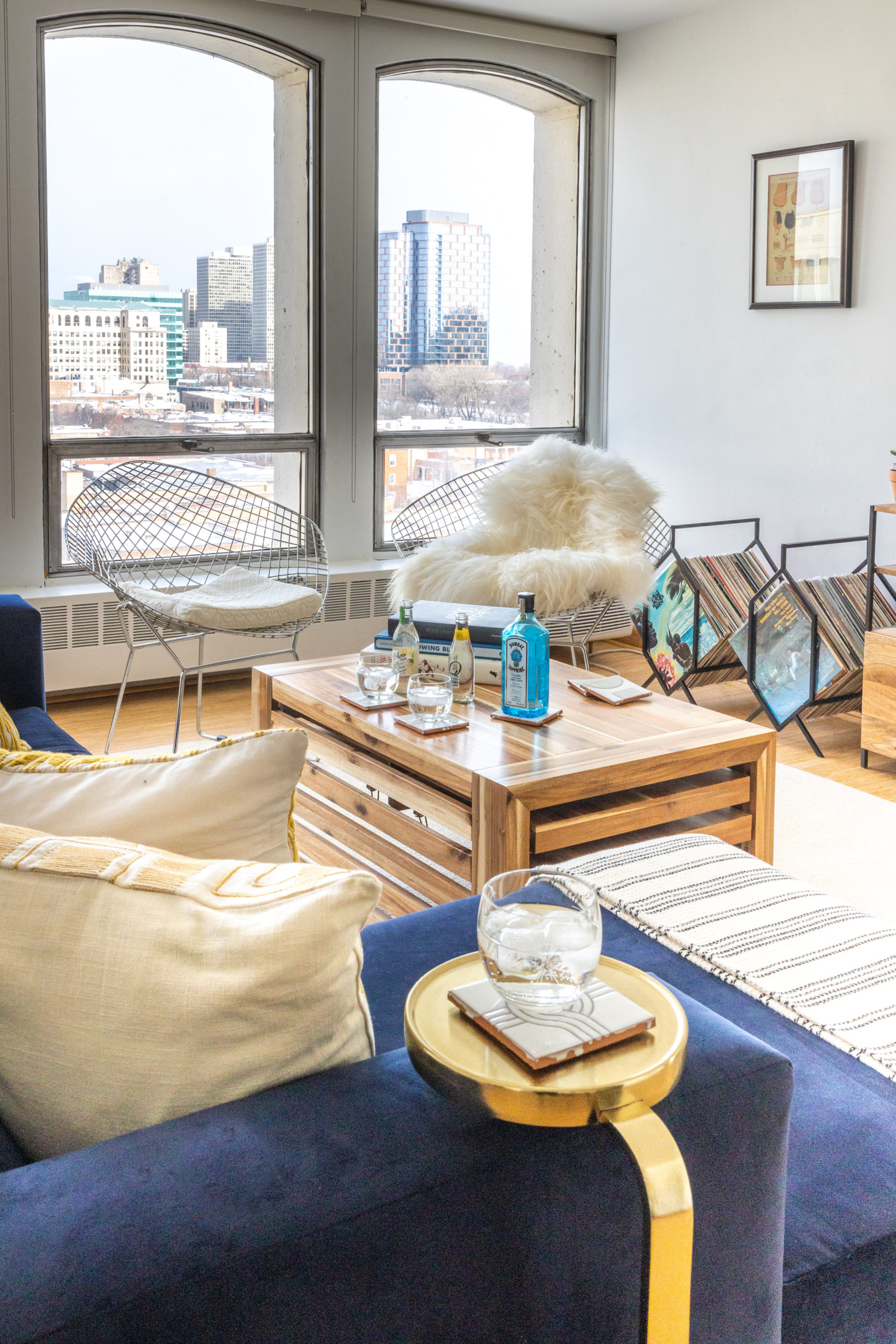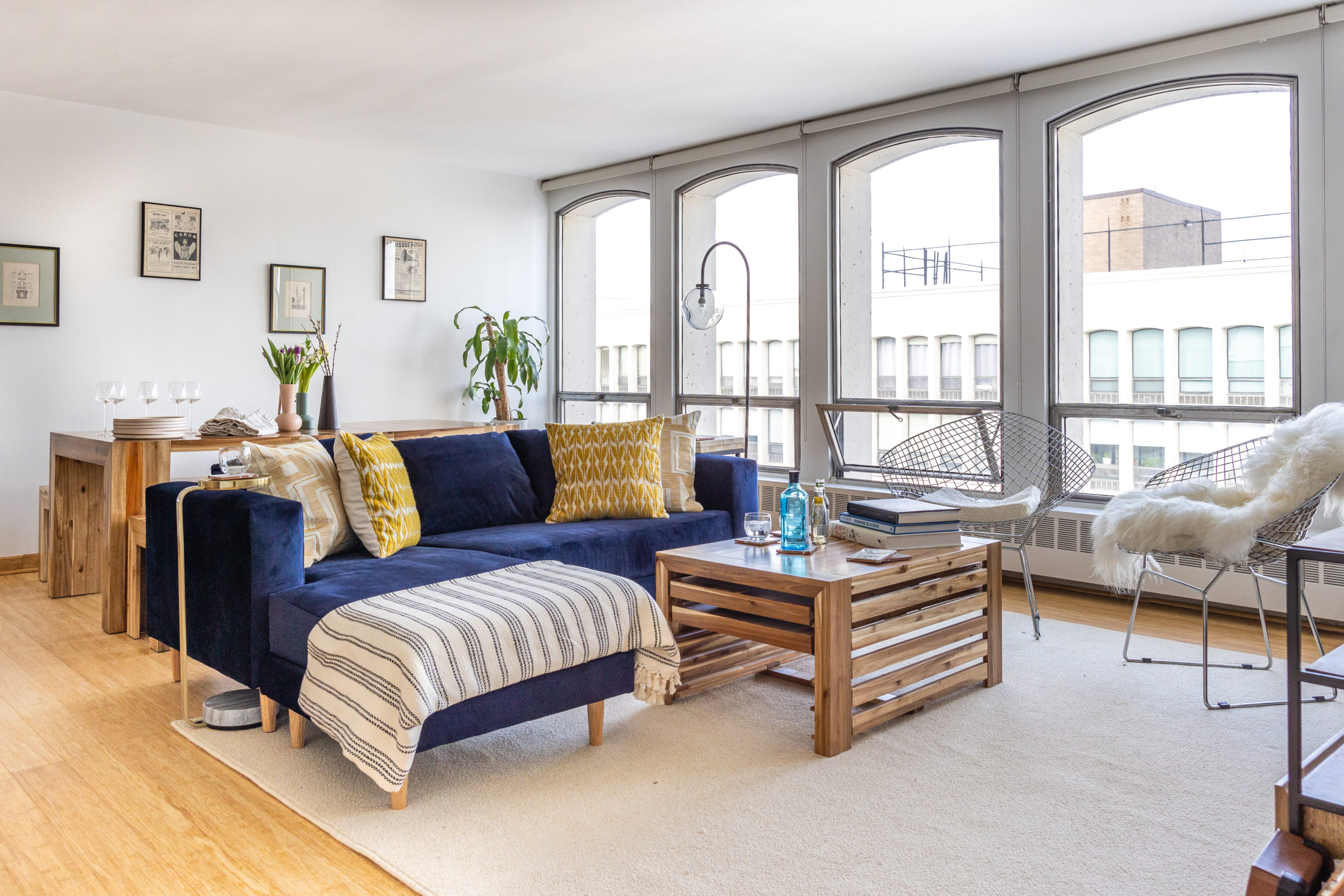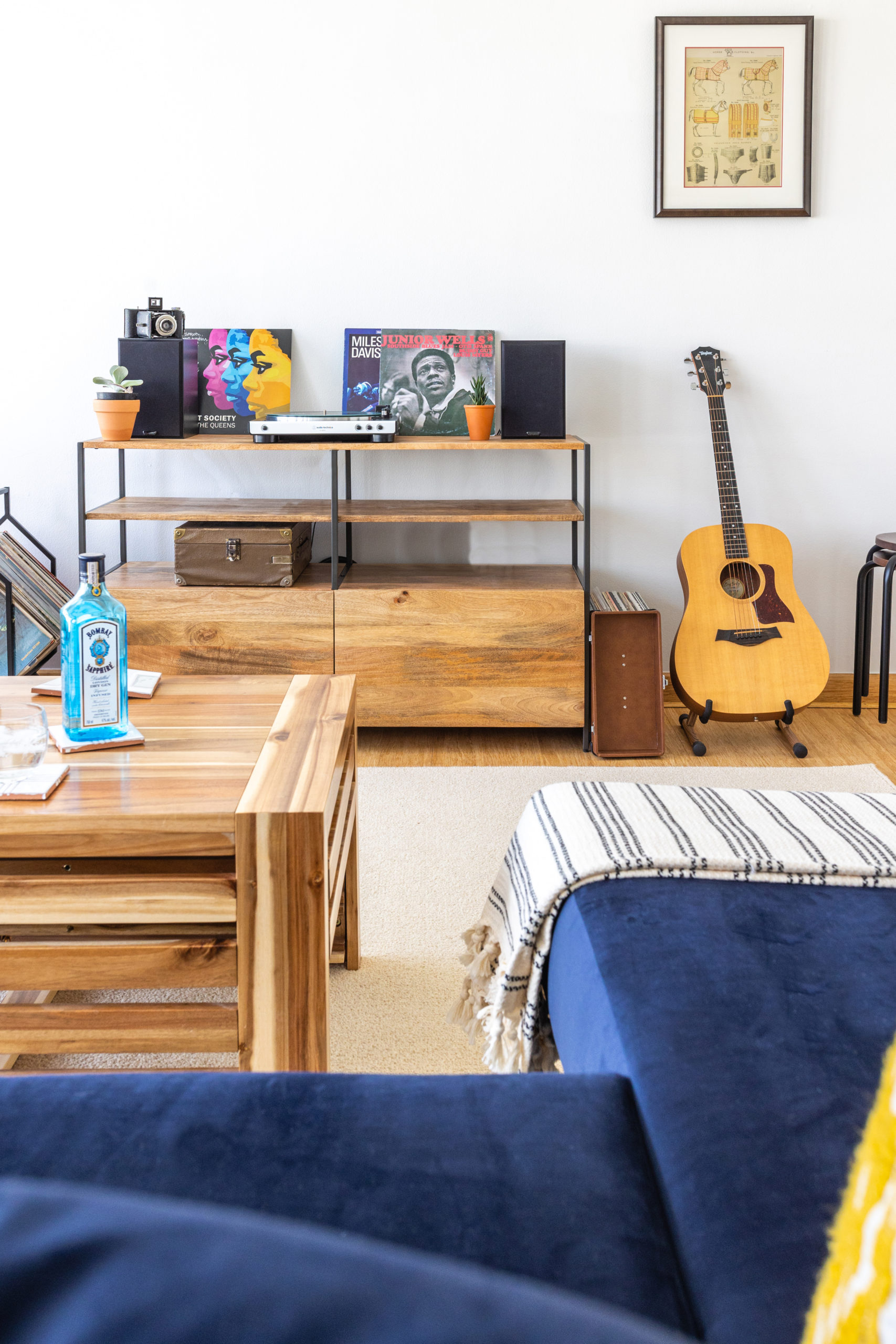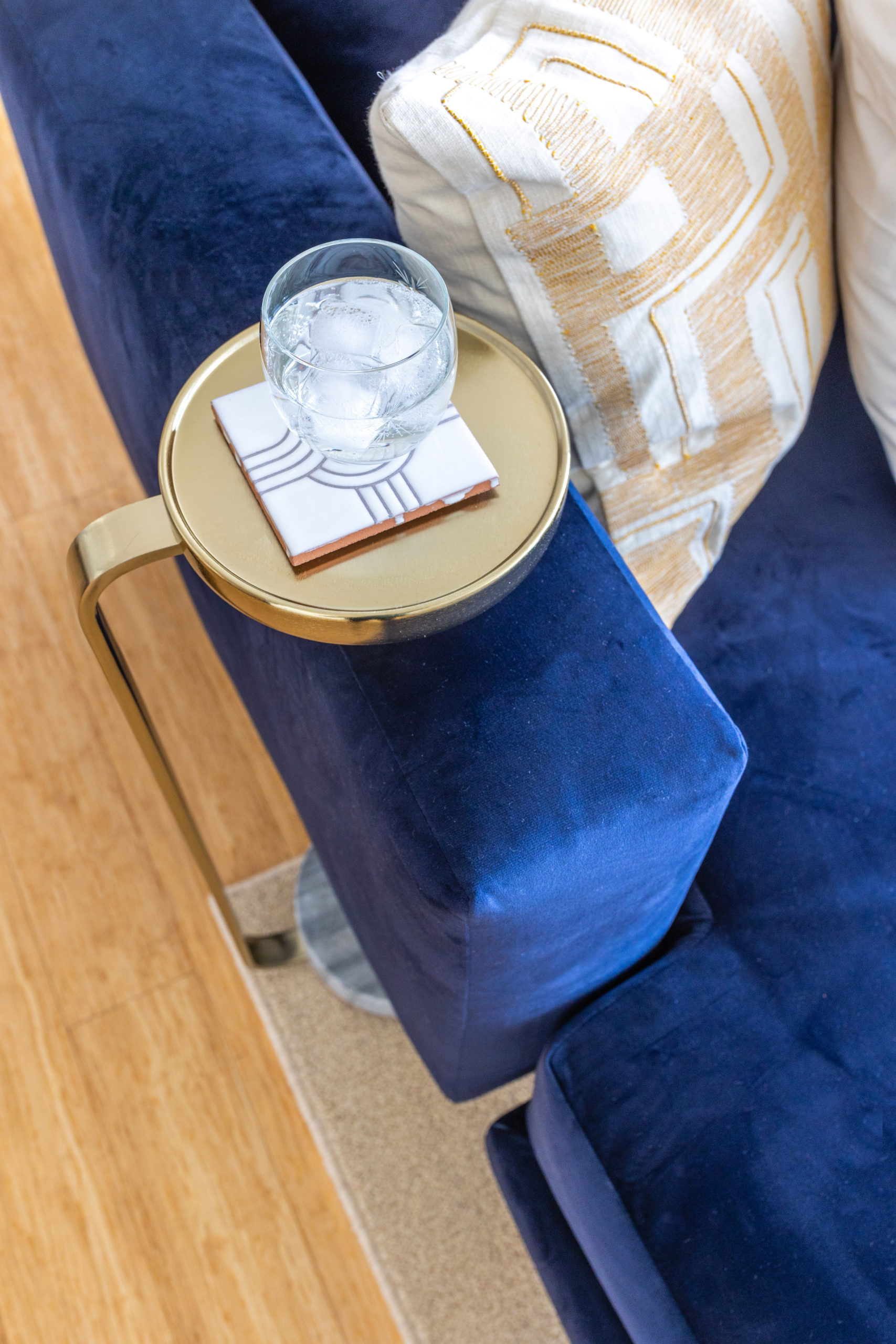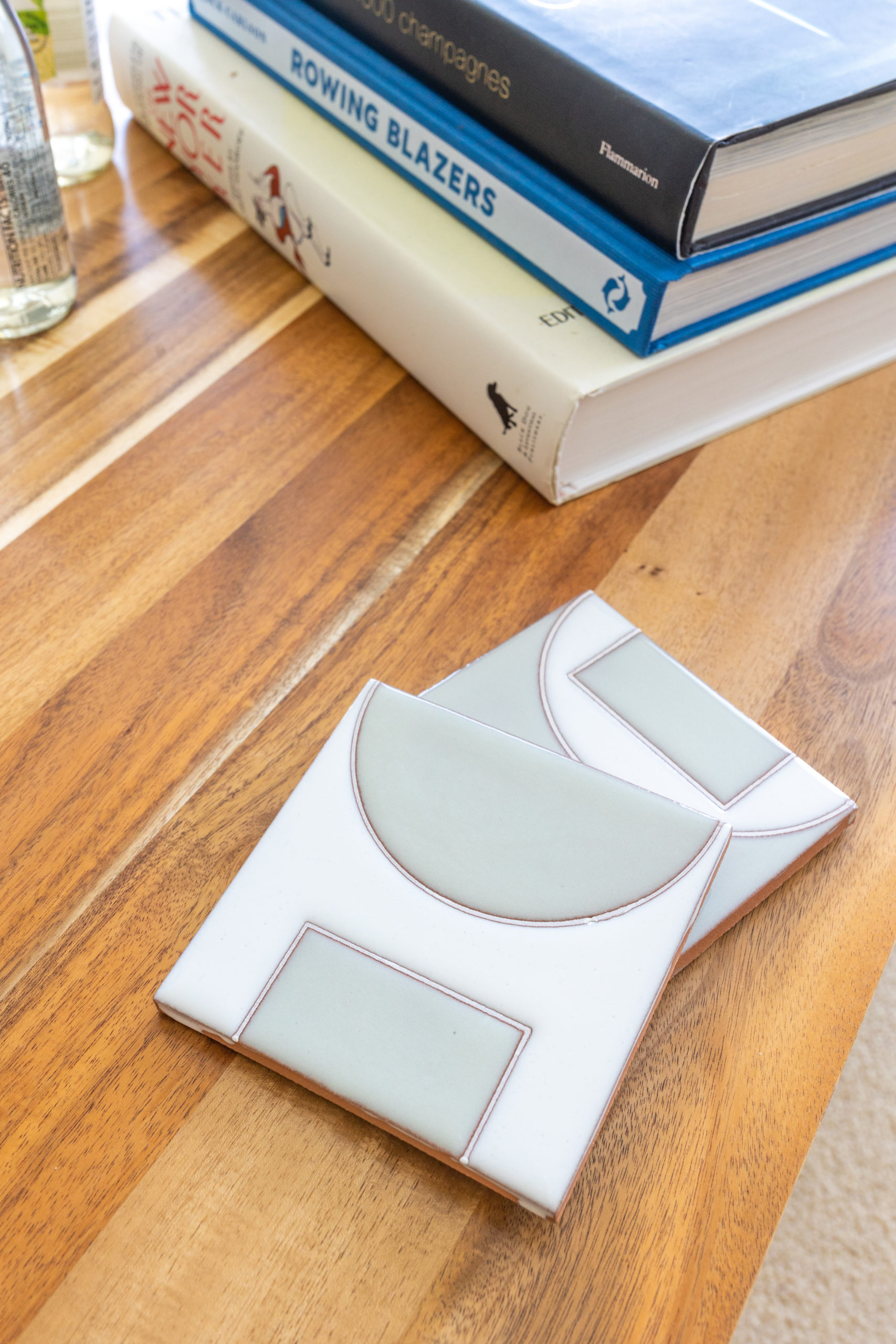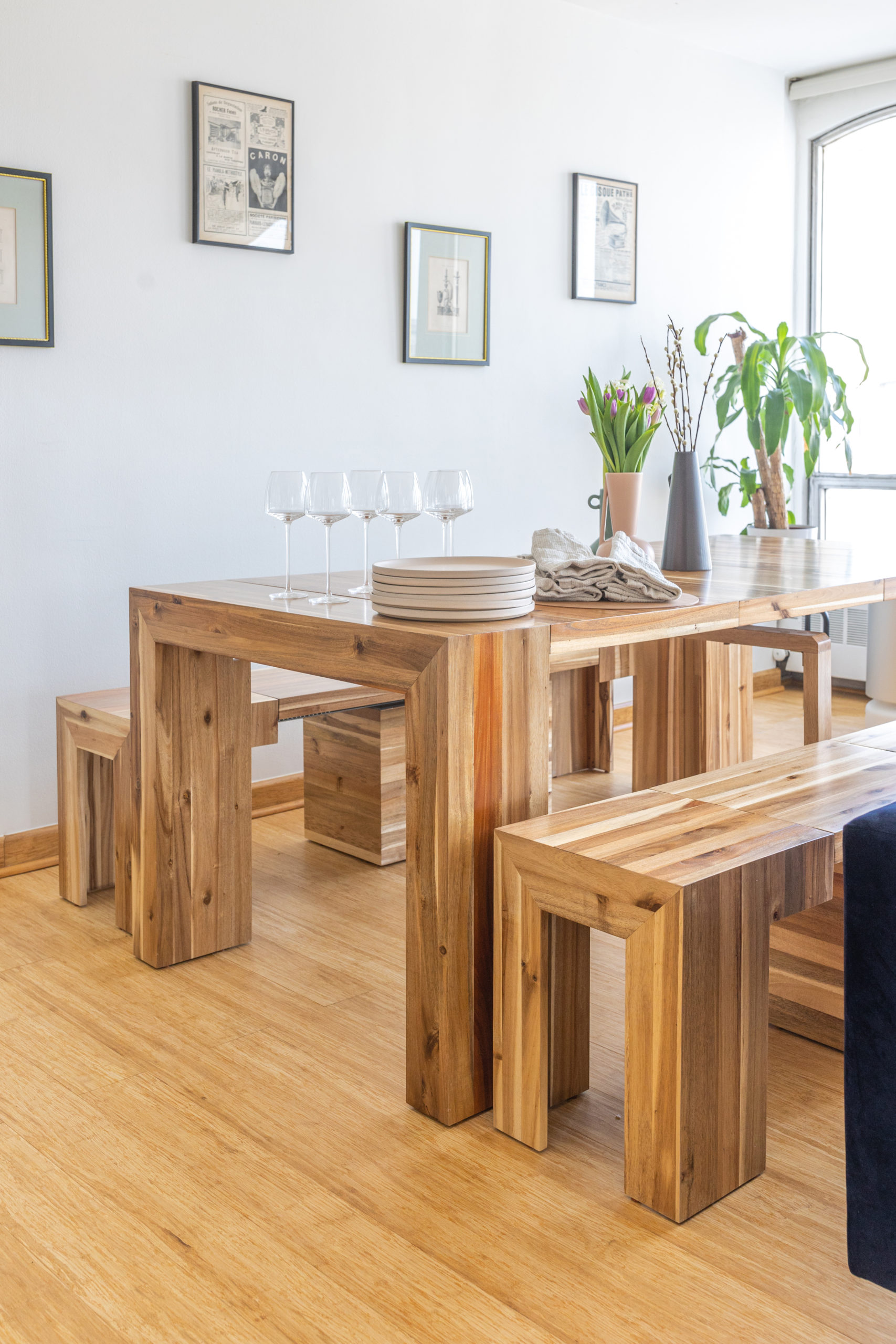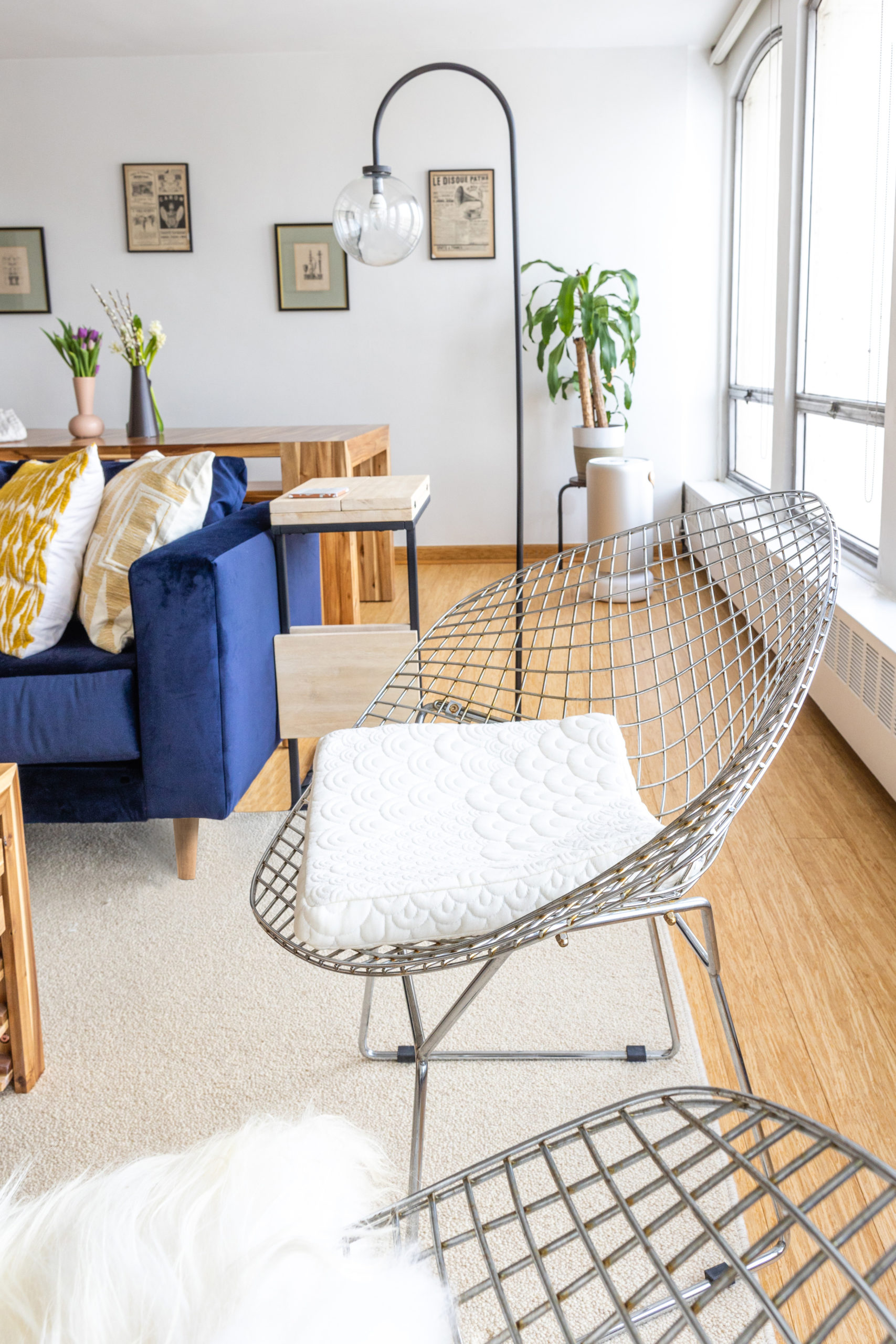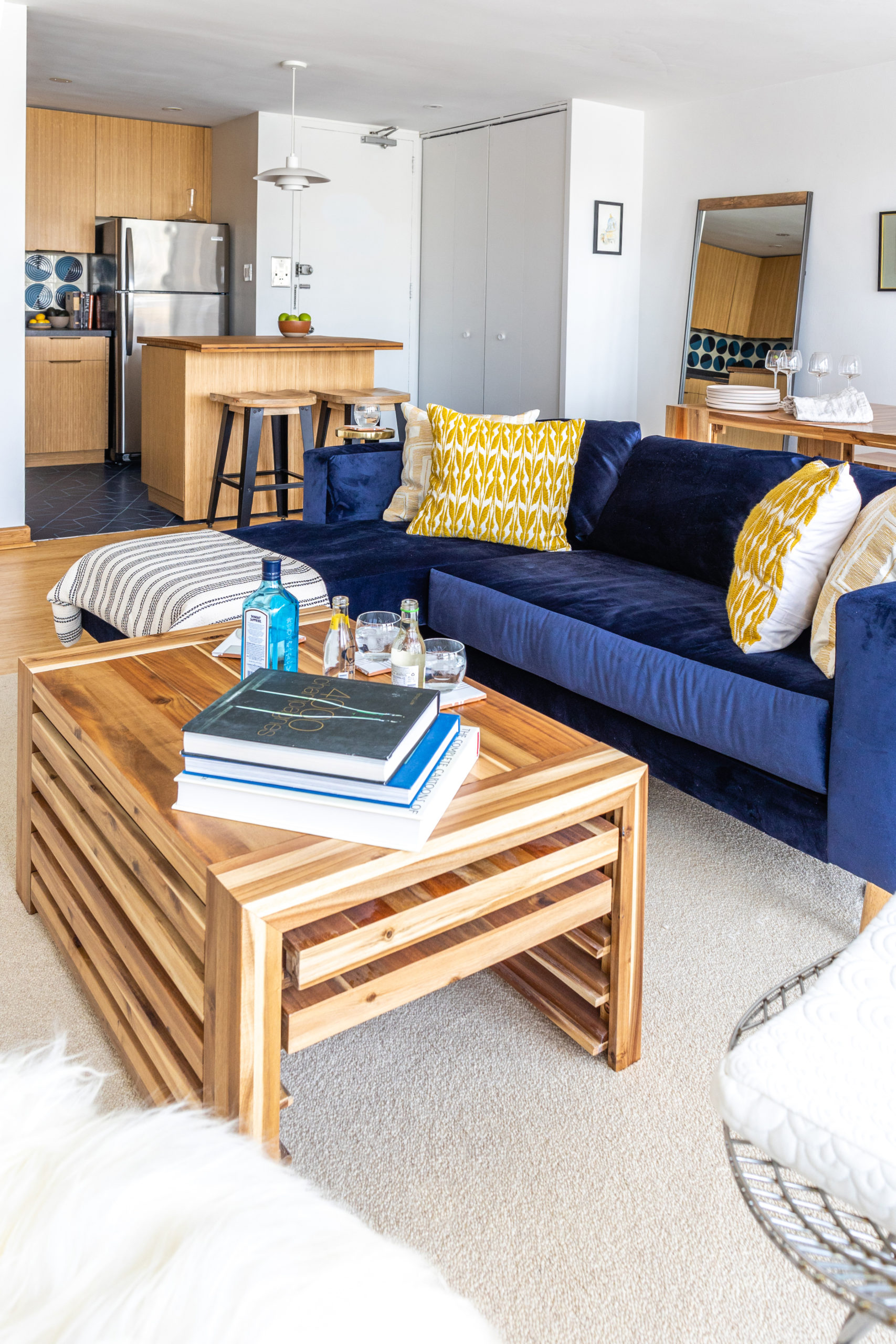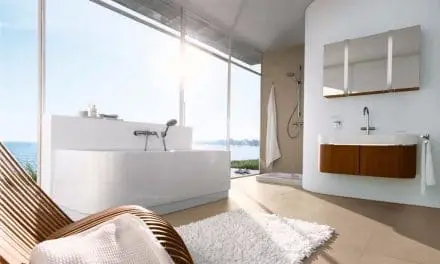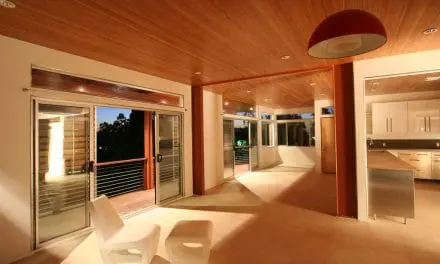After Photos by Jill Tiongco Photography
Some of the links in this article are affiliate links, meaning at no additional cost to you, we will earn a commission if you click through and make a purchase. Thank you for helping us continue to bring you great content.
By Jesse Bratter
Contributing Editor
THE CONCEPT
When embarking on a renovation to go green inside a building designed by Pritzker Prize-winning architect I.M. Pei, there’s basically one rule: don’t touch the architecture. So when Elemental Green embarked on its first branded sustainable renovation inside University Park Condominium—a project dubbed #EcoRenovate—the goal was an eco-friendly update of one of the penthouse apartments in a way that celebrated the historical residential tower’s 1960s modernist pedigree and its distinct curtain of arched windows. And we began by bringing a sustainable living room to life.
That’s because the window feature can especially be enjoyed in the great room of the apartment, which houses the living and dining area. Elemental Green set out to maximize the space and bring in new furnishings and accessories that offered eco-friendly materials and manufacturing processes along with responsible business practices.
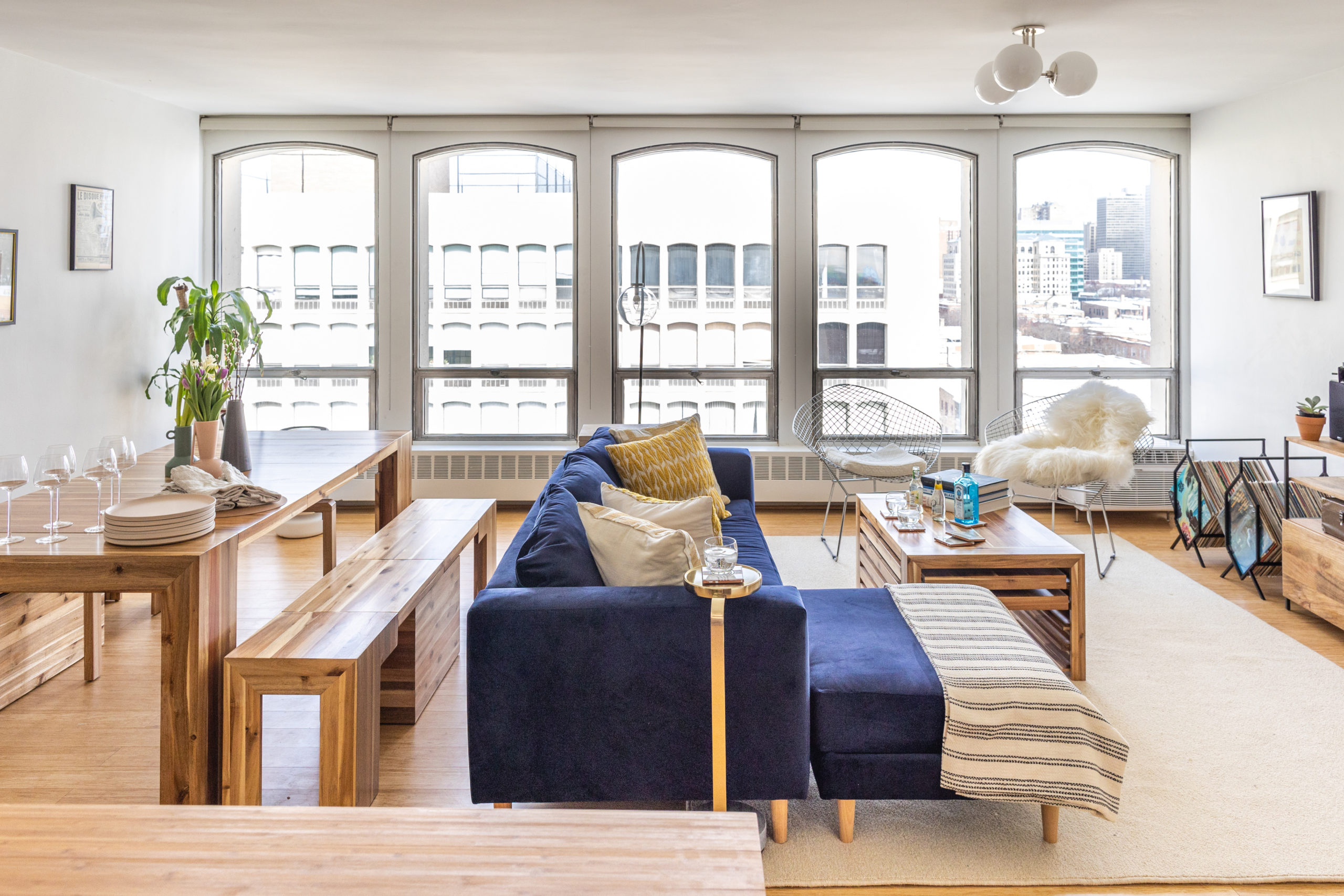
FEATURING
- Recolor: Dove
- Plyboo: Bamboo flooring and baseboards
- Sabai: Sofa in Indigo recycled velvet
- Chairish: Chrome wire diamond chairs in the style of Harry Bertoia
- The Shade Store window shades
- Mckinley carpet by Earth Weave
- Mitzi Stella Semi Flush light fixture
- Molekule air purifier
- Transformer dining table, bench, and coffee table
BEFORE: AN OUTDATED LIVING ROOM WITH HARSH MATERIALS
The original iteration of the apartment had a wall standing between the small closed-in kitchen and the great room. This meant none of the natural light flooding through the windows ever reached the former space. Blonde laminate floors from an earlier update had warped, and the walls and ceiling had layers of harsh white paint that needed a fresh, nontoxic pick-me-up. The windows, while beautifully positioned, weren’t operational, so it wasn’t possible to let fresh air into the apartment.
Before Photos ⓒElemental Green
AFTER: A SUSTAINABLE LIVING ROOM AND DINING ROOM WITH MINDFUL MATERIALS
Knocking down the wall between the living room and kitchen opened up the space dramatically and allowed for the kitchen to spill into the living and dining room, as well as let natural light into the kitchen.
The windows are still the star, but now the layout and design are cohesive and act as a sustainable supporting cast. In order to prime the space for eco-friendly materials to find a new home here, Elemental Green brought in Signa System to repair the operational portion of each window to allow in natural ventilation. Recolor’s recycled paint in soft white Dove washes the walls in warmth, making the apartment bright and airy. Underfoot, Plyboo bamboo flooring and baseboards now anchor the room and speak to the caramel tone of the kitchen cabinetry by French Cabinetry.
A sofa from Sabai, selected in Indigo recycled velvet, means there’s no toxic off-gassing. And chrome chairs in the style of Harry Bertoia (augmented with cushions from Brentwood Home) offer additional midcentury-chic seating thanks to Chairish, an online destination for vintage finds. A Transformer 6-in-1 dining table and pair of benches can morph from a console table to dinner for 12, and the benches can be used as extra seating for entertaining in the living room. Extra leaves for the table are cleverly hidden in the coffee table. (The modular nature of the tables serve as a sustainable element as they offer versatility and room to grow and change over time.)
A Mitzi Stella light fixture provides energy-efficient lighting with its LED bulbs, and a Molekule air purifier ensures healthy indoor air quality is maintained. A chemical-free organic wool rug from Earth Weave anchors it all. And, of course, there’s the music station, complete with a record player to enjoy Chicago’s music scene while tying into the Maze tiles seen in the kitchen backsplash from Fireclay Tile, whose pattern layout mimics revolving vinyl.
READ ON TO LEARN MORE ABOUT THE BRANDS USED IN #ECORENOVATE AND WHAT MAKES THEM A SUSTAINABLE, SMART CHOICE.
WALL PAINT
RECOLOR
What We Chose: Recolor Paints’ Dove on the walls. In a world where 70 million gallons of paint end up in our landfills and waterways each year, Recolor is a bright spot in the building industry. They take unused post consumer and post industrial latex paint, screen it, consolidate it, filter impurities, remove contaminants, add antimicrobial and preservative agents, and render an upcycled paint. The process of using paints that have been opened and reprocessed naturally eliminates much of the VOCs in the paint.
Why We Love the Brand: In addition to helping clear our waterways, Recolor also partners with Habitat for Humanity, selling their paints through Habitat for Humanity’s ReStore and thus helping to build houses and support the local community.
SOFA
SABAI
What We Chose: The sofa, selected in Indigo recycled velvet, is crafted to order using FSC-certified wood, CertiPUR-US certified high-resiliency foam, and recycled and upcycled fibers. Plus, it’s free of toxic flame retardants and formaldehydes. Ethically made in High Point, North Carolina, the furniture capital of America, each sofa employs materials that are mostly sourced locally within 100 miles of production.
Why We Love the Brand: In an effort to close the loop and cut down on furniture waste, Sabai has teamed with FloorFound to create a secondhand line called Sabai Revive, through which you can resell your furniture once you’re ready to move on from it. (But that will likely be a while, since they’re scratch resistant and easy to clean, and designed to withstand 10 years of normal use.) This helps keep the sofas out of our landfills and helps to reduce their carbon footprint by 82 percent.
Sabai also has a Repair Don’t Replace program that encourages you to buy replacement parts rather than an entirely new sofa. Think furniture legs, slipcovers and even full arms.
WINDOW TREATMENTS
The Shade Store
What We Chose: The Shade Store’s 5% Eco-Solar blinds in Almond with a reverse roll create a clean line above the arched windows and offer privacy while preserving the view during the daytime.
Why We Love the Brand: The Shade Store creates window treatments using low-impact materials that are free from harmful substances. Their Eco-Solar Shade collections have obtained Greenguard, Microban and Oeko-Tex certifications. But we especially love their commitment to Corporate Social Responsibility. Among other initiatives, they sponsor the Black Interior Designers Network and plant a tree for every order placed through their Gift of Shade program.
CHAIRS
CHAIRISH
What We Chose: A pair of midcentury chrome wire diamond chairs in the style of Harry Bertoia.
Why We Love the Brand: A good way to choose sustainably is to go on the hunt for antique finds. Reusing existing furniture and materials means you are not wasting more raw materials and energy to manufacture new pieces. And, vintage furniture has likely off-gassed most of its VOCs. Chairish, a design-savvy buyer and seller platform, supports circularity and has helped give more than 590,000 items new life.
AREA RUG
EARTH WEAVE
What We Chose: The Mckinley carpet in Cottontail, size 8’ x 10’. This rug is 100 percent undyed and untreated wool and is part of Earth Weave’s Bio-Floor™ line of chemical-free carpets.
Why We Love the Brand: Earth Weave Carpet Mill crafts 100 percent natural fiber carpets and area rugs using renewable natural resources. You won’t find any toxic chemicals or fire retardants here—only pure natural wool, natural adhesive from a rubber tree, mold-resistant hemp and cotton backing, and a secondary jute backing. There’s no off-gassing or anything harmful to your indoor air quality. Best of all: they’re biodegradable, adhesive included.
FLOORING
PLYBOO
What We Chose: Amber Edge Plyboo Bamboo for the flooring and baseboards.
Why We Love the Brand: Plyboo is a sustainable and eco-friendly architectural bamboo product—formaldehyde-free and rapidly renewable. It’s a more sustainable alternative to hardwood, as its rapid regrowth abilities mean less deforestation and doesn’t rely on pesticides or fertilizers to grow. Bamboo also sequesters 70 percent more carbon per year than wood. Not to mention wood can rot and require more maintenance over time.
LIVING ROOM AND DINING ROOM ACCESSORIES
- Wake the Queens album by Teneia Sanders and Heart Society
- Murray Drink Table from West Elm
- 4-Pack Coaster Kit by Fireclay Tile / Dot Dash in Plein Aire Motif and Roundabout in Gesso Motif
- Transformer Durable, FSC-certified hardwood 6-in-1 dining table, bench, and a coffee table that holds the extra leaves
- Industrial Wood Framed Floor Mirror in sustainably sourced mango wood from West Elm
- Mariposa Pillow Cover in Dark Horseradish from West Elm
- Mitzi Stella Semi Flush pendant in Silver
- Embroidered Blank Shapes Pillow Cover in Dark Horseradish from West Elm
- Murray Drink Table from West Elm
We’re thrilled that #EcoRenovate has attracted exceptional sustainable brands such as Fireclay Tile, Recolor paints, Dekton by Cosentino, Avocado, Sabai, Chairish, Earth Weave, and French Cabinetry. Learn more about our sponsors and design partners throughout the #EcoRenovate journey.


